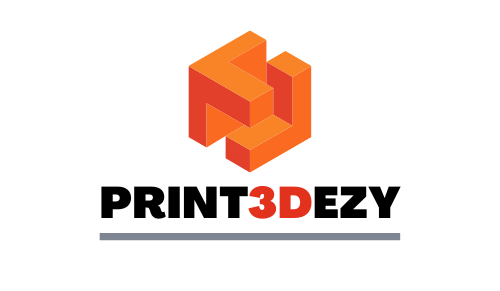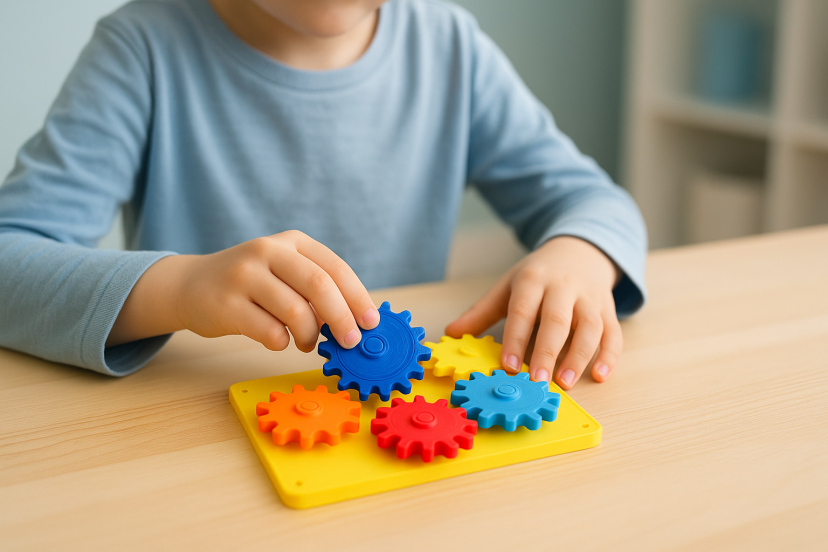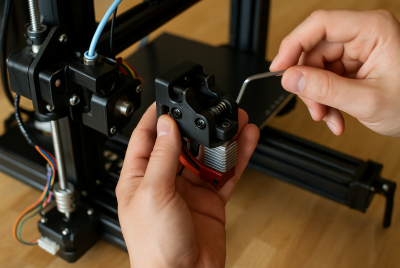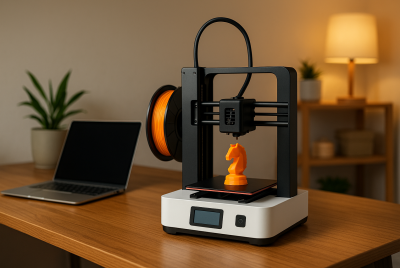3D Printed STEM Toys Kids Will Play Hours With
If you want your child to learn and have fun at the same time, 3D Printed STEM Toys are a great place to start. These toys let kids build, explore, and test ideas with their own hands. They also turn big concepts—like engineering, problem-solving, and design—into something easy and exciting. Kids stay curious. They stay focused. And they stay engaged for hours. This guide will show you why these toys work so well, how they help your child learn, and which options are worth trying at home.
Why 3D Printed STEM Toys Are Becoming a Parent Favorite
STEM toys have always been popular, but 3D printed STEM toys introduce something different—true hands-on creativity. Kids aren’t just following a preset design. They’re imagining new concepts, experimenting with shapes, assembling parts, and exploring how things work.
There’s something powerful about watching a child pick up a piece, twist it around, ask questions, and then try something new. That natural curiosity is exactly what STEM is all about.
Hands-On Learning Kids Love
One of the biggest strengths of these toys is how they encourage kids to use their hands. When kids build physical objects—not digital ones—they make stronger mental connections. They think more critically. They experiment more freely.
A child figuring out how two printed gears mesh together is practicing early physics. A child trying to balance a 3D-printed tower is learning engineering principles. They don’t need a screen. They don’t need instructions. Their hands guide the learning.
A Boost in Creativity and Confidence
Every time a child experiments with a part and solves a problem—no matter how small—they gain confidence. It’s a quiet kind of confidence, too. The kind that comes from trying, failing, and figuring it out in their own way.
And because 3D printed toys can be fully customized, every build feels like a brand-new creative adventure.
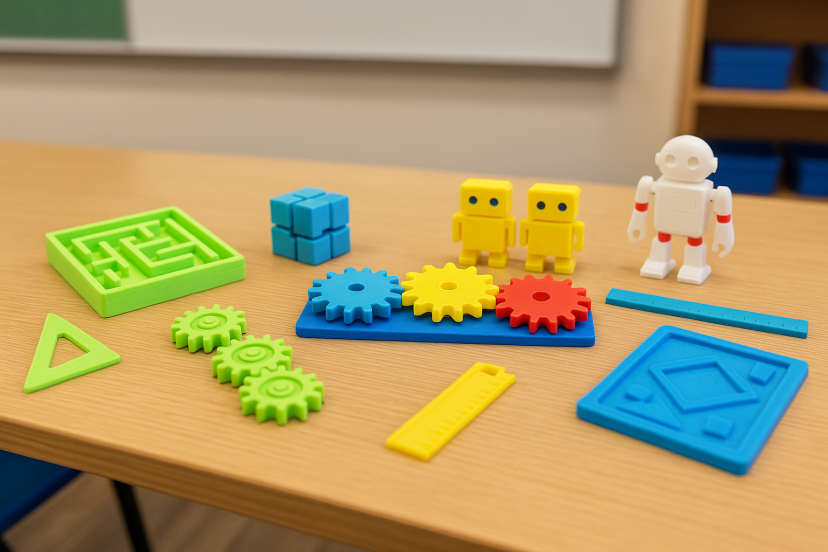
What Makes 3D Printed Toys Stand Out?
We all love regular building toys, but 3D printed toys offer something special. They’re not mass-produced and they’re not generic. Plus, they’re personal, customizable, and endlessly adaptable.
Custom Designs Fit Any Child’s Interest
Does your child love dinosaurs? Print dinosaur puzzles or T-Rex skeleton models.
Do they love cars? Print extra wheels, spoilers, ramps, and mechanical parts.
Do they love art? Print stencils, tessellations, mazes, and geometric patterns.
You can adapt almost any idea into a real object. That flexibility is something traditional toys can’t match.
Strong, Durable, and Safe Materials
Most 3D printed toys are made with PLA, a plant-based filament that’s biodegradable and child-safe. It’s durable enough for daily play and smooth enough to handle comfortably—especially if lightly sanded.
No toxic chemicals, no harsh odors.
Eco-Friendly and Low Waste
Instead of buying new sets every time something breaks, you can simply print a new part. No excessive plastic packaging. No throwing away entire sets. It’s an environmentally conscious way to introduce STEM learning at home.

Best 3D Printed STEM Toys for Kids
If you’re looking for fresh, creative ways to use your 3D printer for kids’ learning, these STEM toy ideas are easy wins. They’re hands-on, highly replayable, and simple enough for beginners to print — but fun enough to keep kids busy for hours.
1. Articulated Flexi Creatures
These bendy animals (dragons, dinosaurs, sharks, turtles) are printed in one piece with moving joints. Kids love them because they wiggle, twist, and feel alive in their hands. They teach motion, flexibility, and basic mechanical concepts.
2. Modular 3D Printed Marble Run
Print track pieces, ramps, spirals, chutes, and junctions. Kids can snap them together to build unique marble mazes every time. This teaches gravity, slope, momentum, and design thinking.
3. Kid-Friendly Gearboxes & Mechanical Kits
Simple gear trains, hand-cranked spinners, or reduction gearboxes help kids see how motion transfers through gears. It’s physics in the easiest, most fun form.
4. 3D Printed STEM Robotics Shells
Print animal shells, robot bodies, or interchangeable arms that attach to small servos or micro-robots. Kids get to “skin” their robot with designs they imagined — a huge creativity boost.
5. Puzzle Brains, Mazes & Spatial Games
Interlocking puzzles, twist cubes, sliding mazes, shape-sorters — all printable at home. These toys sharpen problem-solving skills and keep kids focused longer than you’d think.
These ideas also let you scale difficulty simply by resizing the models or printing new variations. They turn STEM learning into a hands-on adventure.
Must-Have Products to Help You 3D Print These Toys
Whether you already have a printer or you’re just getting started, these Amazon picks make it easier to design, print, and refine your own 3D printed STEM toys. They’re the tools families and beginners love because they’re affordable, safe, and easy to use.
1. 3Doodler Start+ Kids 3D Printing Pen
Why it’s helpful: Perfect for beginners. Kids can draw simple shapes, add details to printed pieces, or fix small parts. The filament is cool-touch and kid-safe.
Use it for: Adding decorations, building props, repairing printed toys.
2. Official Creality Ender 3 (Beginner-Friendly 3D Printer)
Why it’s helpful: The Ender 3 is affordable, reliable, and perfect for printing articulated animals, puzzles, and STEM models.
Use it for: Full-size toys, gearboxes, marble run sections, robotics shells.
3. Polymaker PLA Filament (Non-toxic, Kid-Safe PLA)
Why it’s helpful: PLA is the safest filament for kids’ toys. It’s plant-based, low-odor, and easy to print.
Use it for: Any toy your kids will handle frequently.
4. Set of Precision 3D Printing Tools
Why it’s helpful: Includes spatulas, clippers, sanding sticks, tweezers, and scrapers — everything needed for smoothing edges or cleaning prints.
Use it for: Ensuring printed toys have smooth, safe surfaces for little hands.
5. 3D Printer Design Software for Kids (Tinkercad-Friendly Books)
Why it’s helpful: Guides kids (and parents) in designing simple models. They can design their own gears, animals, puzzles, and toy parts.
Use it for: Encouraging kids to create their own 3D printed STEM toys — a big confidence booster.
Science-Proven Reasons 3D Printed STEM Toys Help Kids Learn
If you’ve ever watched a child become completely absorbed in building something, you already know how powerful hands-on play can be. But what’s even more encouraging is how strongly the research supports it.
One study looked at preschoolers participating in guided block-building activities. These weren’t complicated tasks—just simple building challenges that required kids to think, adjust, and try again. What the researchers found was huge: kids showed noticeable improvements in early math skills as well as executive functions like memory and flexible thinking. Even though this study didn’t involve 3D printing, the connection is clear. When kids experiment with 3D printed pieces—gears, connectors, mechanical parts—they’re using the same problem-solving muscles.
Another study examined how kids responded when 3D printing became part of their school lessons. The findings were fascinating. In the 3D printing integration and STEM attitudes study, students didn’t just enjoy using 3D printers—they became more excited about STEM subjects overall. Teachers noticed it too. With 3D printing, lessons felt more meaningful because kids were creating something real. Their ideas weren’t staying on paper. They were becoming physical objects.
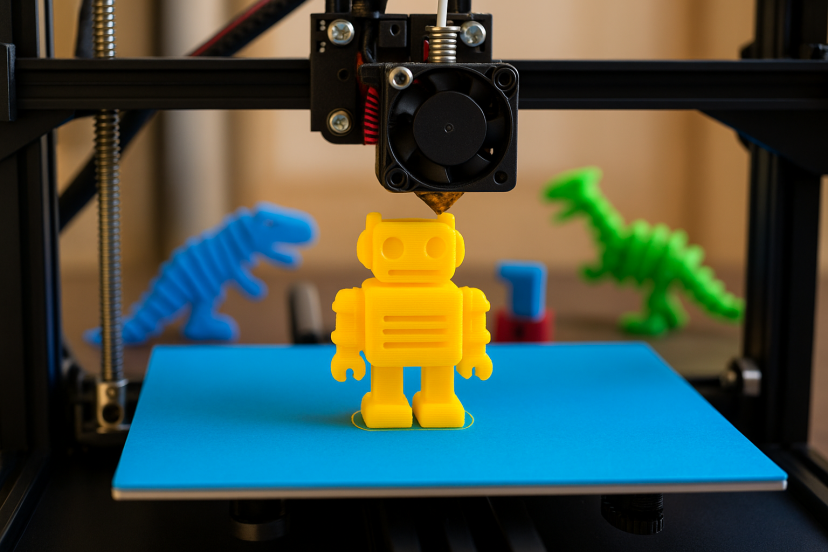
Where 3D Printing Meets STEM Education
The magic of 3D printing isn’t just happening at home. Classrooms around the world are embracing it, too.
Teachers Love the Flexibility
Educators are printing everything from math manipulatives to engineering models. They love that they can adapt lessons instantly—no need to buy expensive kits.
Kids Love Seeing Their Ideas Come to Life
Imagine drawing a design on a screen and then holding the physical object in your hand. That moment of “I made this” has a powerful impact on children. It builds confidence and ownership over their learning.
STEM Feels Less Intimidating
When kids create their own toys or learning tools, STEM doesn’t feel intimidating. It feels accessible. Fun. Something they can shape with their own hands.
How to Personalize STEM Toys With 3D Printing
This is where things get extra fun. Personalizing toys isn’t just possible—it’s easy.
Add Names, Designs, and Colors
Print toys with your child’s name embedded. Add patterns. Change colors. Modify shapes. Kids love objects that feel uniquely theirs.
Print Your Own Replacement Parts
Lost a wheel? Need a bigger gear? Want a sturdier base? Just print a new one. You can even upgrade designs to make them stronger or more interesting.
If you want to take things a step further, you can explore helpful resources like the 3D printer parts guide, which breaks down the essential components you need to upgrade or improve your prints.
It’s perfect for improving the quality of your prints or upgrading accessories.
Safety Tips for 3D Printed Toys
3D printed toys are generally very safe, but it’s always good to keep a few things in mind:
- Use PLA filament for kids—it’s non-toxic and plant-based.
- Smooth any rough edges so the toy feels safe to touch.
- Keep tiny parts away from kids under age 3 to prevent choking risks.
- Make sure moving parts aren’t too tight or fragile.
- Supervise younger kids during complex builds.
Conclusion
3D Printed STEM Toys bring together the best of both worlds: creative play and meaningful learning. They give kids something to build, explore, redesign, and understand. And because they can be printed, customized, and rebuilt endlessly, the possibilities never run out.
Whether you’re printing your own designs or pairing printed pieces with the toys you already own, you’ll see firsthand how these toys spark curiosity, confidence, and imagination. And in the process, you’ll be giving kids the kind of hands-on learning that stays with them for life.
FAQs
1. Are 3D printed STEM toys safe for kids?
Yes. PLA filament is non-toxic and ideal for children’s toys. Just ensure there are no sharp edges or choking hazards.
2. Do I need a 3D printer to enjoy these toys?
Not at all. You can buy STEM toys and add printed accessories later if you choose.
3. Which age group gets the most benefit from these toys?
Kids ages 5–12 benefit the most from hands-on engineering and building, though teens love advanced projects too.
4. Can kids design their own 3D printed toys?
Absolutely. Beginner-friendly tools like Tinkercad make it easy for kids to create simple models.
5. What filament is best for printing toys?
PLA is the best choice because it’s safe, easy to print, and environmentally friendly.
